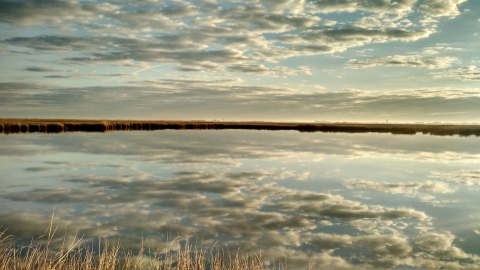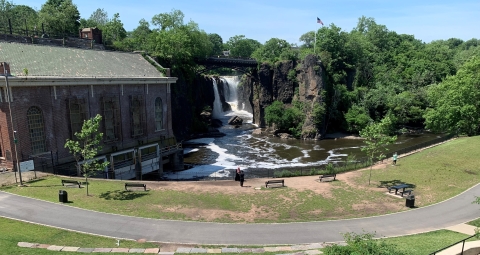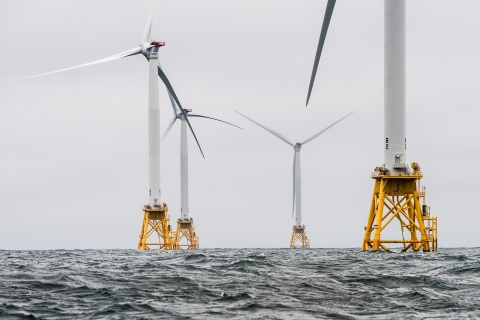States
New JerseyClick here to return to the New Jersey Field Office home page.
Conservation Planning Assistance (CPA) assists State and Federal agencies, stakeholders, and organizations with federally-permitted, licensed, or funded projects by minimizing potential impacts to the U.S. Fish and Wildlife Service’s (Service) trust resources (e.g., migratory birds; migratory and interjurisdictional fish; endangered, threatened, and at-risk species; certain marine mammals; certain federally managed water resources; and land’s managed by the Department of the Interior, including National Parks and National Wildlife Refuges). Project development is completed collaboratively to accommodate infrastructure demands, such as transportation or energy, while protecting wildlife, fish, and plants. Biologists, engineers, and ecologists work cohesively to craft solutions to complex resource issues under statues such as the Fish and Wildlife Coordination Act (FWCA), a law which requires Federal agencies to consult with the Service on all projects that may impact wetlands, streams, lakes, and rivers; the Clean Water Act (CWA); Endangered Species Act; and the National Environmental Policy Act (NEPA). Varying agencies and stakeholders rely on the Service’s CPA biologists for recommendations to lessen environmental impacts of projects.
Examples and more information of the laws and policies we work with include:
- Clean Water Act – Section 404
- Bald and Golden Eagle Protection Act
- Endangered Species Act
- Fish and Wildlife Coordination Act
- Migratory Bird Treaty Act
- National Environmental Policy Act
- New Jersey’s Assumption of Section 404 of the Clean Water Act
- Coastal Barrier Resources Act
Federal Activities
Federal agencies coordinate with the Service regarding their proposed construction or water-resource development projects, including those that they permit or license that will impact water resources, as required under the FWCA and CWA. The Service also frequently provides NEPA reviews for projects that require Federal action. The Service’s role is to ensure that construction is planned with a view toward conservation of fish and wildlife. Every year, the New Jersey Field Office reviews projects that require permits and NEPA documentation from agencies such as the U.S. Army Corps of Engineers, Department of Transportation, Federal Communications Commission, U.S. Coast Guard; and several military bases in New Jersey. The Service is effective at reducing the impacts of these projects on fish and wildlife resources and ensuring that mitigation is provided to achieve fish and wildlife benefits. Examples of Federal activities we frequently review include flood control, shoreline stabilization, hurricane protection, coastal storm risk management, dredging (navigation), beneficial use of dredged materials, mitigation banking, railways or roadways, new facilities, communication towers, and environmental restoration.
We frequently work with the U.S. Army Corps of Engineers Philadelphia and New York Districts to conserve, protect, and enhance fish, wildlife, and plants and their habitat for the continuing benefit of the American people. Resources regarding the U.S. Army Corps of Engineers regulatory program and projects that they lead, which the New Jersey Field Office may have reviewed can be found at:
- New York District, U.S. Army Corps of Engineers, Projects in New Jersey
- New York District, U.S. Army Corps of Engineers, Regulatory Program
- Philadelphia District, U.S. Army Corps of Engineers, Projects in New Jersey
- Philadelphia District, U.S. Army Corps of Engineers, Regulatory Program
FERC Transmission and Pipeline
The Federal Energy Regulatory Commission (FERC) is an agency that regulates transmission of electricity, gas, and transportation of oil by pipeline. The Service consults with FERC for potential impacts to trust resources. Examples of projects that the Service consults with FERC on include transmission activities, pipeline activities, hydroelectric projects, and dam construction which could potentially impact fish and wildlife. The Service recommends conservation measures to protect or mitigate for any trust resources that might be adversely impacted by the federal action. The Service regularly works with FERC to assist with project development and mitigation strategies for the environment.
Resources:
Hudson-Raritan Estuary
The New Jersey Field Office reviews Federal project activities within the Hudson Raritan Estuary (HRE). The HRE is located within one of the most urbanized regions in the United States and encompasses all tidally influenced portions of rivers flowing into the New York-New Jersey Harbor, including the Hudson, Raritan, Hackensack, Passaic, Shrewsbury and Navesink Rivers. The HRE also includes the lands within watersheds impacting these watercourses, such as the wetlands at the New Jersey Meadowlands within and near Hackensack, New Jersey. The Service is a member of the Meadowlands Interagency Mitigation Advisory Committee (MIMAC)/Interagency Review Team which was established to ensure appropriate use and development of mitigation banks required for impacts to wetlands and waters within the area. The Service’s major role in the HRE is to address the problems created by past land use and to provide long-term protection for the biodiversity of the area.
Resources:
Offshore Wind Energy
Energy generated from offshore wind infrastructure is expected to increasingly meet more of New Jersey’s demand for energy generated from renewable sources. The New Jersey Field Office reviews offshore wind infrastructure projects that are within leased areas maintained by the Bureau of Ocean Energy Management (BOEM). We consult with project sponsors prior to construction to assess if proposals might adversely affect natural resources such as migratory birds and bats, bald eagles, wetlands and waters, fish, and threatened and endangered species. The Service plays a major role in ensuring that project sponsors develop plans that minimize or avoid impacts to natural resources and mitigate for those that are unavoidable.
Resources:







